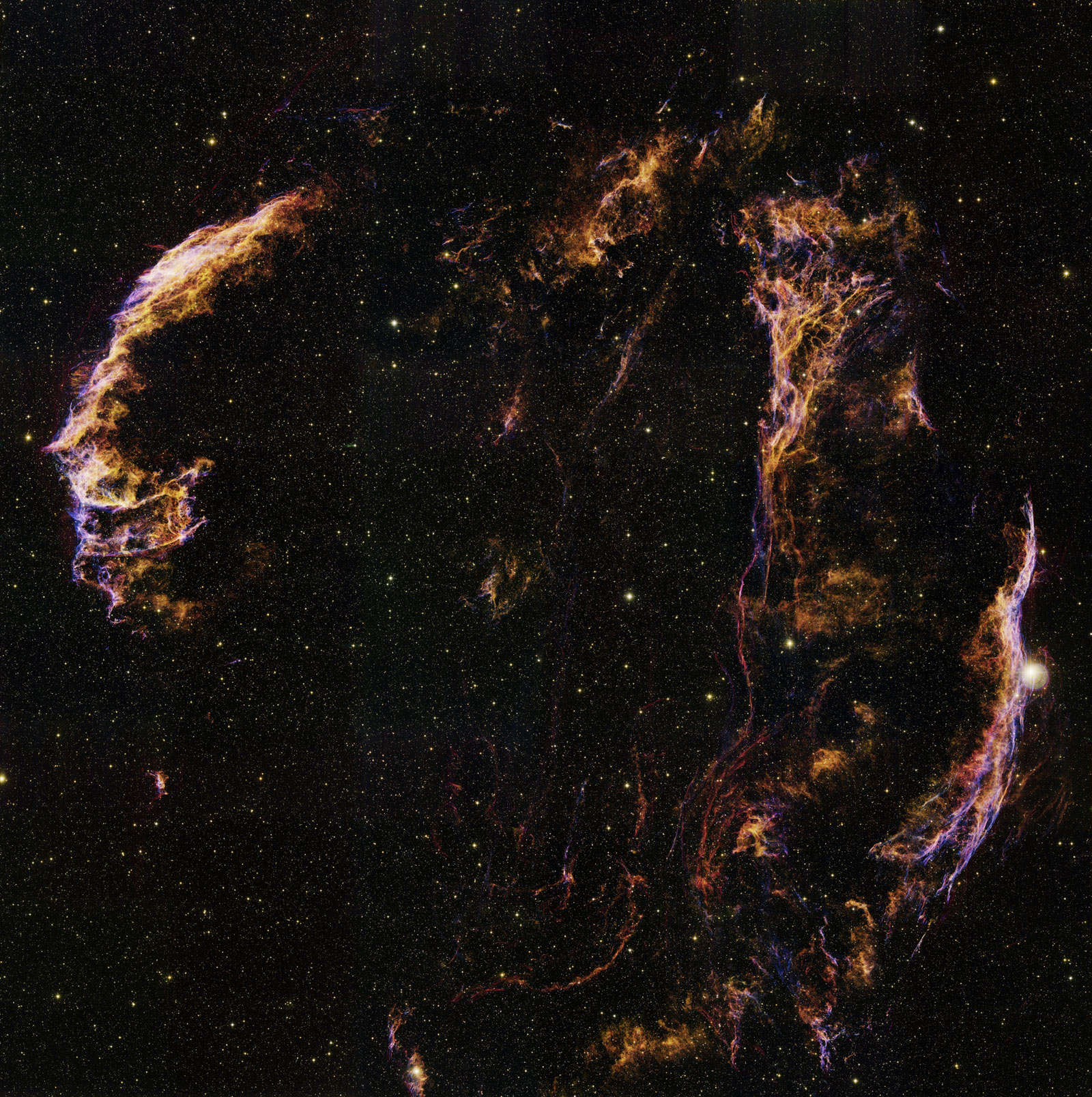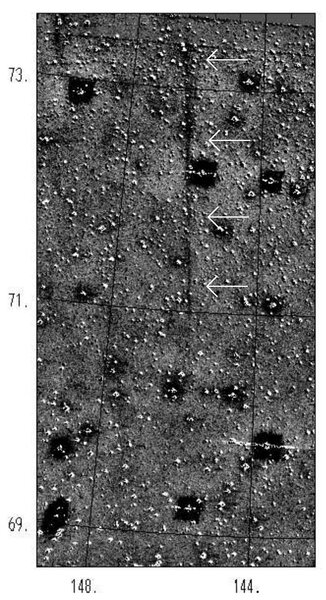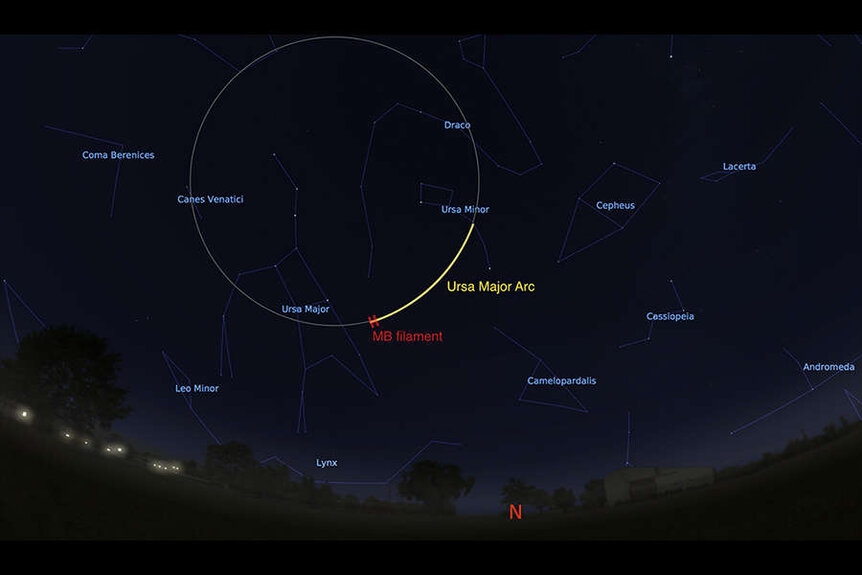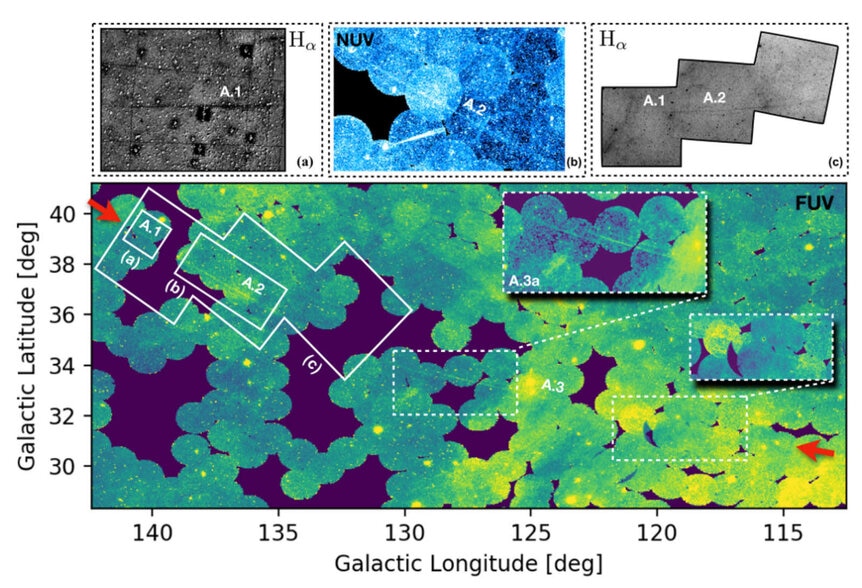Create a free profile to get unlimited access to exclusive videos, sweepstakes, and more!
Less than a million years ago, a supernova exploded just *600* light years away!

It's not very often that I read a paper and literally mutter, "holy crap" out loud.
I just read a paper that shows that a huge arc of ultraviolet-emitting gas 30 degrees long — 60 times the apparent width of the full Moon — encircles a vast area of the sky including the Big Dipper, and was likely caused by a supernova exploding just a few hundred light years from the Sun less than a million years ago.
Holy crap.
This story starts over 20 years ago, when a pair of astronomers decided to map a large chunk of the sky using essentially a nice telephoto camera equipped with a filter that picks out the light from warm hydrogen gas in space. Gas like that preferentially emits light in the red part of the spectrum (at a wavelength 0.656 microns, if you like geeky numbers) so using a filter centered there blocks out a lot of extraneous light, letting faint hydrogen become visible.
They found something really weird: What looks like a straight line of gas in the sky stretching for about 2.5°, five times the size of the full Moon! That's very strange, and hard to figure out what could cause it. They concluded it was likely some hot object like a star plowing through space and exciting the gas around it, leaving a wake of glowing hydrogen behind it.
All these years later, one of those two astronomers decided to follow up on this. We now have great online tools that allow you poke at archived observations taken by telescopes that have previously surveyed the sky. One of these was a small orbiting observatory called the Galaxy Evolution Explorer, or GALEX. It surveyed the sky in two different colors of ultraviolet, and lo, they found the weird line segment in the data… but they also found two other segments right next to it, all aligned, forming an immense broken arc between the bowls of the Big and Little Dippers!
It's only an arc, but obviously part of a circle. Extended all the way around, the circle is a staggering 60° across, easily large enough to engulf the Big Dipper and parts of several other constellations. As someone familiar with the sky, it's hard to explain just how ridiculously huge that is. It's like this: Imagine holding a meter stick with one end of the stick in each hand (so your hands are a meter apart). Hold it at arm's length against the sky, and that's roughly how big this object is. It covers over 6% of the entire sky.
Like I said: Holy crap.
What could this be? What could form such a structure? Well, the arc segments are very thin compared to their lengths (the length to width ratio is well over 100:1), and given that the overall shape is a circle, the best candidate is a supernova remnant, the expanding shell of gas blasted out from an exploding star. This would sweep up and compress the gas around it, creating a thin shell that would look like a soap bubble, a circle in the sky (assuming the expanding debris from the explosion is spherical).
But to be that huge in the sky means it happened pretty close by… and while the exact distance is unknown, the astronomers estimate the supernova probably happened around 600 light years away. That's close, though far enough away that there were little to no physical effects on Earth.
Given how fast the expansion would be, they also estimate it happened (very) roughly 700,000 years ago. So not recently, but then not so long ago astronomically speaking. Amazing.
It's hard to say much more about it. It's so big and faint that it's difficult to measure much about it. One interesting aspect about it is that this area of the sky has a couple of spots in it known to have much lower density of hydrogen gas compared to other spots in the sky, making them "cleaner" windows into deeper space. This is where super deep images tend to be taken, like the Hubble Deep Field, which was located near the center of the structure. It's possible this is because the exploding star swept up material there, snowplowing it up and leaving behind less junk in space.
What an astonishing find! And all because of a funny straight glowing bit of stuff seen in a very deep image… but leading to a possible stellar explosion right in our back yard! One that close would be incredibly bright, far brighter than Venus in the sky. I wonder if our distant ancestors — intelligent tool users who looked very much as we do now and with brains just like ours — looked up in wonder at the new star in the night sky, brightening over a few days enough to cast shadows for weeks, and tried to understand what they were seeing?
Which, really, is just what we're doing now. We have the advantage of centuries of scientific thought and sophisticated tools to analyze it, though, so we can better understand what really happened out there, quadrillions of kilometers away and so many millennia ago.


















